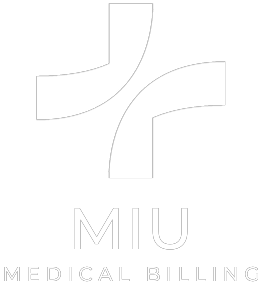Introduction
In an integrated healthcare system, medical coding and billing services are critical functions for both payment reconciliations within the revenue cycle and cash flow. Successful completion of both tasks depends on documentation that accompanies patients during the diagnosis and treatment phases. Distinguishing between medical billing and coding aids compliance in legal aspects, operational productivity, spending efficiency, and maximizing revenue.
What is Medical Coding?

Medical coding involves converting a patient’s diagnosis, procedures conducted on him/her, and services offered into appropriate codes. These codes are crucial for documenting care processes as well as facilitating charging to avoid discrepancies in revenue flow.
Common Medical Code Sets:
- ICD-10: For diagnoses
- CPT: For procedures
- HCPCS: For services, supplies, and equipment
It is the responsibility of medical coders to guarantee that pertinent codes are used so that charging can be accurate and insurance companies understand what services were billed.
As an illustration, “Type 2 Diabetes” would be translated back by a coder into ICD-10 E11.9.
What is Medical Billing?
Preparing claims for every insurance company separately, as well as invoicing individual patients, through thorough preparation, comes under this heading. Medical billing also includes submission of the prepared electronic claims, thereafter projecting herself as a post office sending a letter electronically. Key Responsibilities:
- Submit claims to payers
- Manage patient billing and collections
- Track payment statuses and follow up on denied claims
Example: A biller submits a Medicaid claim using the coded information provided by the coder for services rendered.
Difference between Medical Coding and Medical Billing
| Medical coding | Medical billing |
| Purpose: Converts patient data into codes | Uses codes to submit claims and bill patients |
| Standard Tools: Encoder Pro, ICD-10 & CPT books | Practice management software |
| Certifications: CPC, CCS, CCA | CPB, CMRS |
| Workflow Role: Starts the revenue cycle | Completes the revenue cycle |
| Impact in Practice: Reduces errors in billing | Speeds up reimbursement |
ICD-10, CTP, and HCPCS Codes: Their Importance in Medical Billing and Medical Coding
A patient’s diagnosis, procedure, and service receive a systematic code for medical billing purposes. Using these codes assures proper documentation, communication between providers and insurance companies, as well as timely payment. The three main coding categories used are ICD-10, CPT, and HCPCS. Each one has its own importance during the healthcare revenue cycle.
ICD-10: The Diagnosis
ICD stands for International Classification of Diseases, which is documented worldwide. ICD-10 is the tenth revision of this document, which assigns an identifier whenever a medical condition is detected during a visit, hence reflecting a diagnosis. These codes span every subspecialty of medicine, which means they are mandatory when filing insurance claims. Every single illness, ranging from common colds to chronic ones, has its very own ICD-10 code.
Example:
- ICD-10 Code: J20.9
- Description – Acute bronchitis, unspecified
ICD-10 codes help justify the need for treatment and support medical necessity for insurance purposes.
CPT: Defining the Procedure
CPT is an abbreviation of Current Procedural Terminology. These codes are published by the American Medical Association and are designed to define medical services, surgical services as well and diagnostic services. CPT codes record the activities performed on a patient, whether it is an exam, a lab test, an imaging exam,/or surgery. Every code comes along with a service that is carried out by a provider.
Example:
- CPT Code 99213
- Description: Make an office visit to an established patient with moderate complexity
CPT coding enables providers to inform the patient of the kind and amount of care they have provided, which is an essential requirement of billing and reimbursement.
HCPCS: Services, Supplies, and Equipment
HCPCS, Healthcare Common Procedure Coding System, is a coding system prepared in order to code the products, supplies, and services that fall outside the CPT system. These are durable medical equipment (DME), prosthetics, and ambulance rides, as well as selected medications.
HCPCS has two levels:
- Level I: The CPT codes
- Level II: Alphanumeric codes that represent non-physician services and supplies
Example:
- HCPCS Code: E0114
- Description: Crutches, underarm, adjustable, or fixed
HCPCS codes are especially important for Medicare, Medicaid, and other public health programs.
How do the Codes Work Together?
Each code type plays a unique role:
- ICD-10 identifies the diagnosis
- CPT documents the procedure performed
- HCPCS captures any additional services, equipment, or supplies
When combined, they give a complete picture of a patient encounter, and insurers know why a patient entered and what care he or she received, as well as any supportive items used. Proper coding leads to efficient claim processing, minimized cases of billing errors, and the creation of a comprehensive record of the patient.
Case Study: Managing Regulatory Compliance and Administrative Processes
In medical healthcare systems, distinguishing between coding and billing functions aids in regulatory compliance, the mitigation of errors, and increases reimbursement speed.
- Coders must obtain training pertinent to the code revisions ICSD-10, CPT, and HCPCS to ensure compliance for legal and insurance purposes.
- A biller oversees patient engagement, monitors claims, and manages appeal processes for established claims to maximize revenue capture.
- Collaboration between both functions reduces the time between claim submission and the resolution of accounts receivable.
- Each designated role is critical for sustaining compliance requirements due to preserved audit functionality in regard to scrubbed claim submissions by certified specialists.
Technological Advancements Impacting Medical Coding and Billing
In achieving accuracy and productivity within the fields of coding and billing, technology is significantly relied upon in modern-day health care systems.
- The use of AI in various sectors helps lower human errors by noticing coding discrepancies that would otherwise result in a denial of payment due to improper coding.
- Claim status updates, payments made or pending, as well as billing patients, can now be done through cloud-based portals, improving service delivery to patients.
- Integration of EHRs with captioned coding systems enhances efficiency by eliminating duplicative work while permitting the transfer of data.
- Automation, such as active monitoring, assists coders and billers with HIPAA payer guidelines, helping them stay compliant with the regulations set forth.
• Both roles increasingly use analytics dashboards to identify trends in denials, delays, or revenue leaks.
Advantages of knowing medical billing compared to medical coding

- Assists in reducing claim denial due to incorrect codes more effectively
• Ensures faster and more consistent reimbursements
• Reduces compliance risks with insurance and government regulations
• Improves inter-departmental communication and workflow efficiency
• Strengthens the overall financial health of medical practices
Why Choose MIU Medical Billing as Your Partner
- Team of certified professionals experienced in both medical coding and billing
• Streamlined systems for complete revenue cycle management
• Tailored services for private practices, group clinics, and specialty care providers
• Proven track record of increasing clean claims rate and reducing denial ratios
• Support for both coding compliance and billing reconciliation, ensuring end-to-end accuracy
Most Common Questions
Q1: How does medical coding differ from billing?
Answer: Coding applies specific and standardized codes to document each service rendered by a provider, while billing utilizes the coded information to submit claims for payment.
Q2: Are coders able to perform billing tasks as well?
Answer: Yes, but these roles are independent due to differing skill sets and certifications required.
Q3: In between medical billing vs medical coding, which wins and why?
A: Billing deals more with insurance; the intricacies of coding require technical details.
Q4: How much do coders and billers earn?
Answer: Medical billing subject matter experts make about $45K-$60K per year, whereas Experienced medical billers with several years of experience make approximately $40K-$55K annually.
Q5: Is there an increase in demand for medical billers and coders?
As the availability of telehealth leads to expanding healthcare access and shifts in care delivery, including the emphasis on value-based care models.
In a nutshell
Every healthcare provider must understand at least the fundamental differences between the billing and coding processes. Though they have distinct functions, they shall coordinate efficiently together towards automating revenue cycle processes. In managing a clinic or pursuing a career option, you want managed expert medical billing and coding services, and it’s crucial for flourishing within the state’s healthcare environment.




